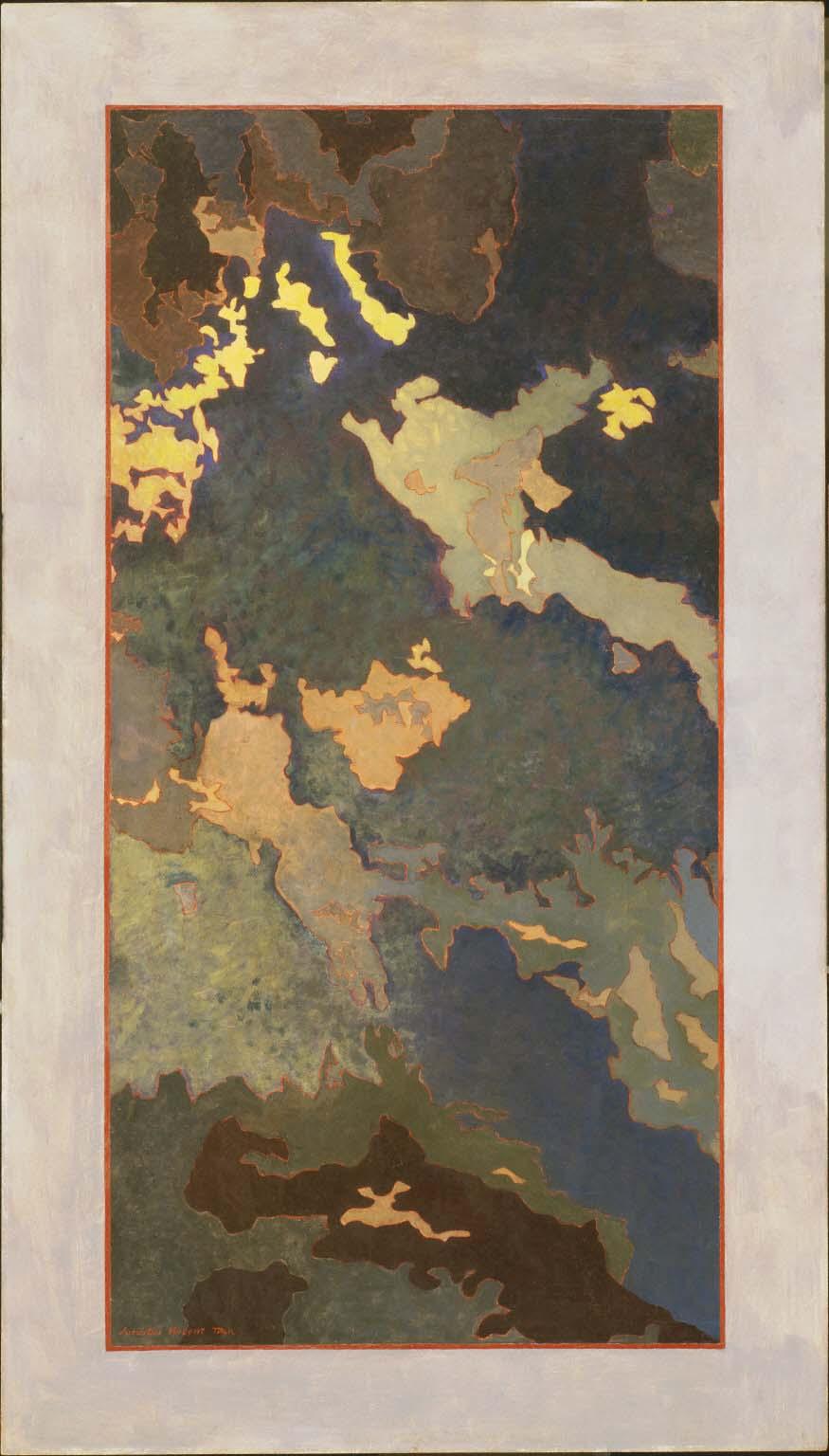Night, Amargosa Desert
Augustus Vincent Tack ( 1935 )

Probably inspired by a trip to California in the summer of 1933, Night, Amaragosa Desert is one of the most important abstractions Tack created in the 1930s. It is the foremost example of expressionist brushwork in his late abstractions, while the somber color harmonies create a sense of mystery and loneliness that suggests nature’s cataclysmic grandeur.
Duncan Phillips was the first to appreciate Tack’s venture into abstraction (he started out as a portrait artist) by purchasing his non-figurative works as early as 1923. He became Tack’s most outspoken patron, championing his decorative and mystical abstractions for the next forty years—works that Phillips believed were the first true blending of Eastern and Western art in America. Shortly after acquiring Night, Amaragosa Desert, Phillips exhibited it with works by Vincent van Gogh, Paul Cezanne, and Pierre Bonnard. In 1957, he paired it with work by Mark Rothko and Kenzo Okada in an installation entitled “Abstract Expressionists from the Collection.” This captured Phillips’s ideal of joining Eastern and Western aesthetics into a fully realized vision of American abstraction as a transcendent, spiritualized experience of pure form and color. Phillips believed that Tack’s abstract ventures were connected to postwar abstraction and that during this time, the artist was feeling his way toward large-scale color symbolism. Tack’s abstractions were never appreciated in the artist’s lifetime, but they were a formative influence on artists who visited The Phillips Collection in the 1950s and 1960s, including Kenneth Noland, Morris Louis, Gene Davis, and Sam Gilliam.